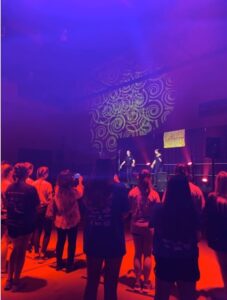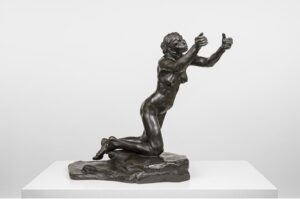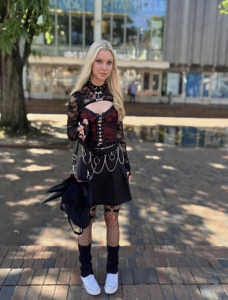
By Reagan Allen
Heather Murphy was in her home getting ready to go out for dinner when she heard a blood-curdling scream coming from the front yard. Murphy frantically ran toward the noise. What she saw horrified her.
Her 3-year-old son, Drew, was sucked under the riding lawn mower after running across the yard. The sharp blades cut into his skin, ripping the tissue off his back leg. The heat from the engine gave him third-degree burns. His heel bone was cut off, exposing the bone that was left. Heather called 911.
“The doctors had to shield me from seeing him like that.”
Her husband, Jamie, who was on top of the mower, jumped down, scooped Drew up, and ran to the car with Heather tailing behind.
The couple exchanged panicked words as Jamie set their son in the back seat. They decided Jamie would rush Drew to a nearby EMS station while Heather stayed home with their other two children.
Jamie sped off, leaving Heather with only the sound of her ragged breathing. She stood outside, shocked, then composed herself. She went to comfort her other children, a 2-year-old daughter and 5-year-old son who came outside after hearing the commotion.
In the kitchen, Heather found her husband’s phone, her only way to find out the well-being of her son. Fifteen minutes later, an ambulance and police officers arrived at the house.
The police asked questions while Heather tried to get any information about where Drew was. Eventually, she found out he was being taken to WakeMed Hospital in Raleigh.
Heather dropped her two kids off at their grandma’s. Then, her neighbor drove her to the hospital because she was in “no shape to drive.”
Heather didn’t see Drew for several hours until they were reunited at WakeMed. “He’s in all kinds of agony and pain and as a mom I just wanted him to be better,” Heather said.
With her son writhing in pain in the other room, doctors told Heather they were unequipped to handle his injuries —there was nothing they could do. Drew would have to wait for a bed at UNC Hospitals where they could hopefully save his leg.
“For a while I couldn’t handle it; the doctors had to shield me from seeing him like that,” she said.
Drew arrived in Chapel Hill around 10:30 p.m., roughly four and a half hours after the accident occurred. He was immediately taken in for surgery. One of the many fears Heather faced that night was the possibility that her son’s leg would be amputated.
However, the doctor refused to amputate without doing everything possible to save Drew’s leg. The two entered what should have been an hour and a half surgery. However, four hours later the leg was saved, and Drew was out of surgery.
Those four hours were torture for Heather and Jamie. They were stuck in limbo, waiting and praying for their son. When they found out Drew was going to be okay with both legs intact, the two were grateful. Shakily, Heather exhaled a sigh of relief.
Long recovery
Drew spent two weeks at the UNC Burn Clinic and another six weeks in the Children’s Hospitals. The family’s time there was difficult.
Drew was still in immense pain and getting better was a gradual process. On top of Drew’s recovery, Heather had two other children to take care of. Her life became the trips from her home to the hospital, going back and forth constantly.
While everyone was thankful for Drew’s recovery, finding moments of joy was hard. Like most 3-year-olds, Drew needed to be constantly entertained. He couldn’t walk much, so keeping his mind occupied was exhausting.
The families first interaction with Carolina for the Kids (CFTK) was at a hospital prom they put on in the playroom.
Drew laughed, sang and ate with the other children. The weight of stress was lifted off Heather while she watched her son have fun for the first time in weeks.
Sarah Prosser, CFTK’s hospital and family relations chair, has been with the organization for the last two years. She’s interacted with patients at UNC Children’s and with some of the patients at pediatric clinics around Chapel Hill.
“When you see the smiles on kids’ faces or get thanked by a family member or staff member at the hospital it reaffirms your purpose and why you’re doing it,” Prosser said. “That’s pretty fulfilling.”
During those two months at the hospital, CFTK provided meals, playdates and arts and crafts to those in the Children’s Hospital, including Drew.
After the hospital’s prom, a member reached out and asked Drew if he wanted to be a kid co-captain. He said yes and was paired with a UNC student in CFTK whom he is still in touch with today.
The co-captain program provides children in the hospital with a friend to talk to for support. Together, Drew and his co-captain played games, talked and did learning exercises. Every year since he has been a co-captain with CFTK.
Drew has been eagerly involved in anything CFTK related. The family has been to banquets, fun runs and the end of year dance marathon fundraiser almost every year since then. Heather and Drew together have spoken at marathons to share his story and how CFTK impacted them.
“We wanted to give back and make sure that the kids know how much they’re appreciated,” Heather said.
Over the last eight years, Drew has been in and out of the hospital. The two following years after the accident he had a couple outpatient surgeries on his legs.
In November 2020, Drew got an infection in his bone and ended up back in the hospital for a week and a half. Then in May of 2021, he had major surgery to reconstruct his heel.
Throughout Drew’s visits to the hospital CFTK has been there offering help, sending cards and bringing in baskets of goodies to cheer him up. His last surgery took place at a different hospital, but CFTK still reached out and asked what they could do.
Heather said it’s been a long and hard process to get him to a full recovery (or close to it) but the help of family and CFTK has made it easier.
Drew and Heather are especially looking forward to their beloved dance marathon. It’s an opportunity for them to laugh, dance, eat and forget their worries for the night.
Edited by Nathan Wellish and Will Christensen

